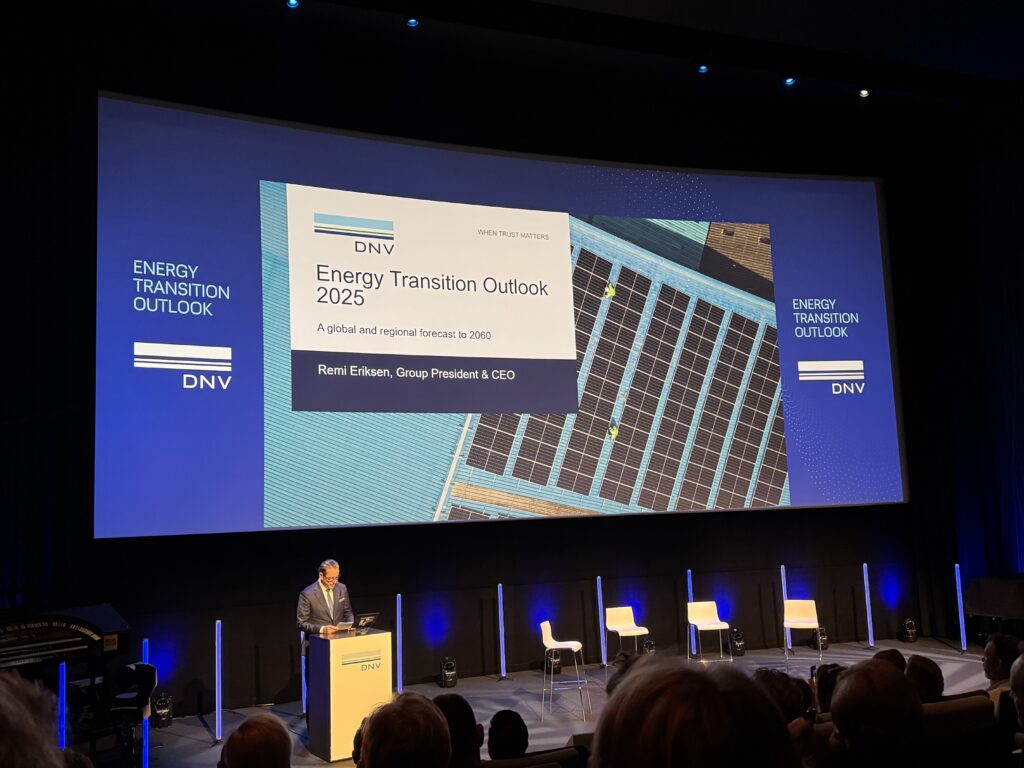
The launch of DNV’s Energy Transition Outlook 2025 held today, 8th October, in Amsterdam and underscored a new reality for the global energy system. This new reality is that the transition is no longer solely driven by climate ambition but is rapidly shaped by a “security-first mindset.” While electrification is an “unstoppable force,” the report highlights severe bottlenecks and cautions that the world is currently on track to miss net zero targets until after 2090.
ETO 2025 Key Findings: Surprises, Good News, and a Long Road
DNV Group President and CEO Remi Eriksen presented three major “surprises,” alongside good news and bad news from the forecast, which now extends to 2060.
The Three Surprises
- US Policy Ripples Diminish: Recent policy reversals in the US only marginally impact the global transition speed. While US emissions goals are delayed by five years, global fossil fuels gain just a 1 percentage point advantage in the 2050 energy mix, settling at a 51% fossil, 49% non-fossil split.
2. Security Boosts Renewables: Energy security priorities, particularly in fossil fuel-importing regions like Europe, China, and India, decisively favor renewables to reduce supply dependency. Without security as a driving force, the transition would be slower. This push also predicts a 150% growth in nuclear power by 2060.
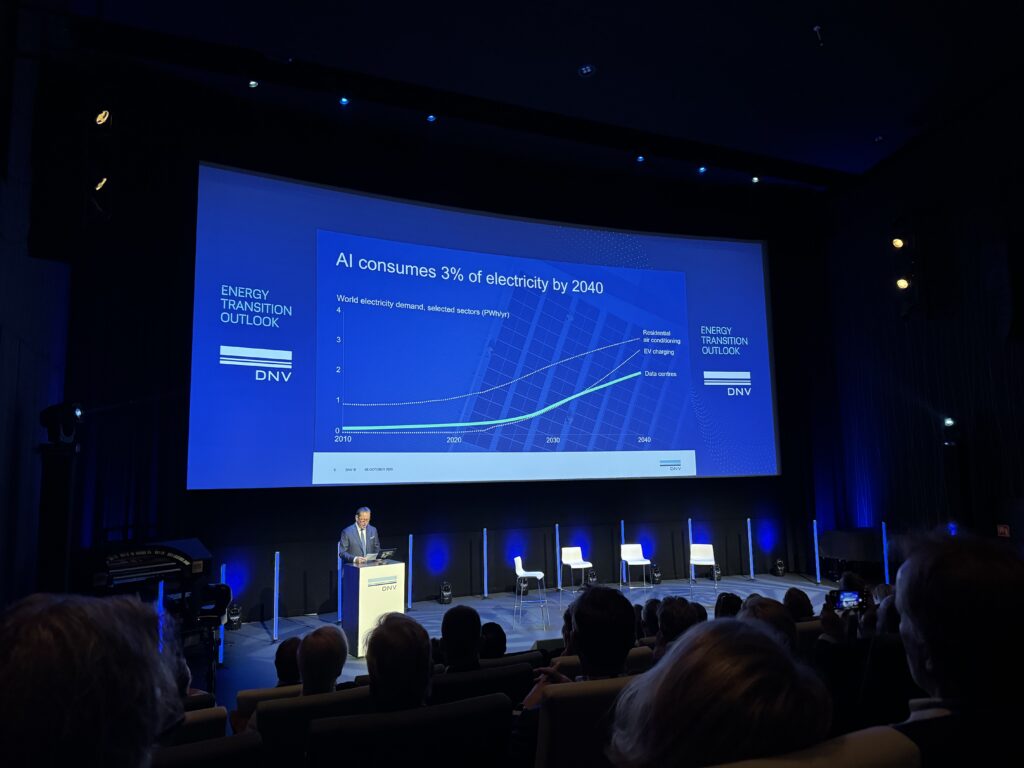
3. AI’s Linear Energy Growth: Though AI training and inference will ramp up data center energy, potentially reaching 3% of global electricity demand by 2040 (up to 12% in the US), the growth of its energy appetite will likely be “linear” rather than “exponential.” This is due to intense competition driving energy efficiency in chip design, algorithms, and cooling.
The Electrification Megatrend (The Good News)
The transition is essentially an electrification megatrend that drives massive efficiency improvements.
- EV Milestone: The world has surpassed 15 million electric vehicles on the road.
- Green Power Surge: Electricity is becoming cheaper and greener. Global solar PV capacity will exceed 3,000 GW this year. By 2040, renewables are expected to provide 65% of all electricity, and by 2060, electricity will be almost entirely non-fossil, moving its share of global energy demand from 21% today to 43%.
- Behind-the-Meter: Plunging costs for solar and batteries will see distributed, behind-the-meter systems (rooftops, etc.) account for 30% of all solar and 13% of all power generation by 2060.
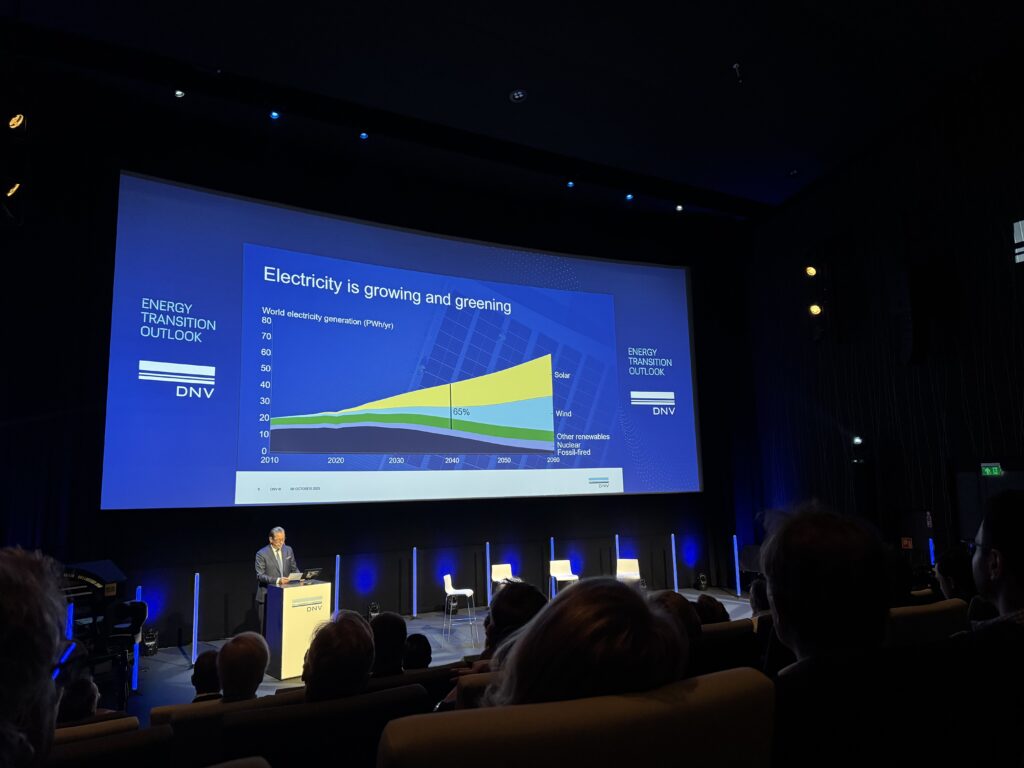
Decarbonization Struggles (The Bad News)
The forecast remains pessimistic on the timeline for net zero, which is projected to arrive after 2090, pushing the world well past the 2°C warming limit.
- Hard-to-Decarbonize: Economic slowdown is hitting hard-to-decarbonize sectors (shipping, aviation, heavy transport).
- Hydrogen Delay: Hydrogen’s forecast share in the 2050 energy mix has dropped from 4.8% to 3.5% this year, with significant scaling only beginning after 2040.
Business of the Trilemma and Gridlock
Two panels explored the challenges of security, finance, and infrastructure.
Security and Resources as the New Competition
The first panel was moderated by Urike Haugen, Chief Communications Officer at DNV, and had Tom Middendorp, Chair of International Milotary Council on Climate and Security; Niels Redeker, Director for Energy Strategy, Ministry of Climate and Green Growth, and lastly, Frans Everts, President-Director, Shell Nederland.
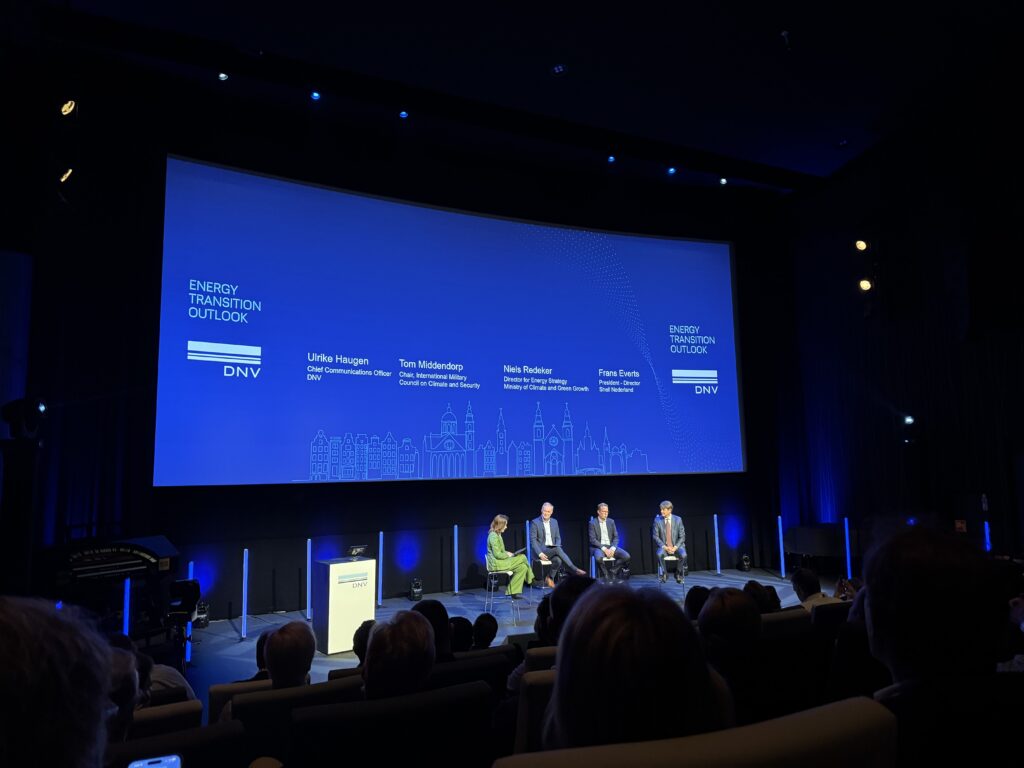
These Experts emphasized that geopolitical fragmentation has made the transition an “arena of global competition” where resilience has become a stronger driving force than climate action.
- Critical Mineral Vulnerability: The world’s reliance on highly concentrated supply chains for critical minerals (e.g., lithium, copper) creates new fragilities, making supply diversification and circular design urgent.
- Natural Gas Role: Integrated energy companies like Shell affirmed that natural gas (and LNG) remains crucial for energy security and flexibility in the short-to-medium term.
- Industry Focus: To prevent the “de-industrializing of Europe,” policymakers must urgently shift focus to the demand side, creating markets for green products (steel, cement) and providing support for expensive solutions like Carbon Capture and Storage (CCS).
The Bottleneck of No Transition Without Transmission
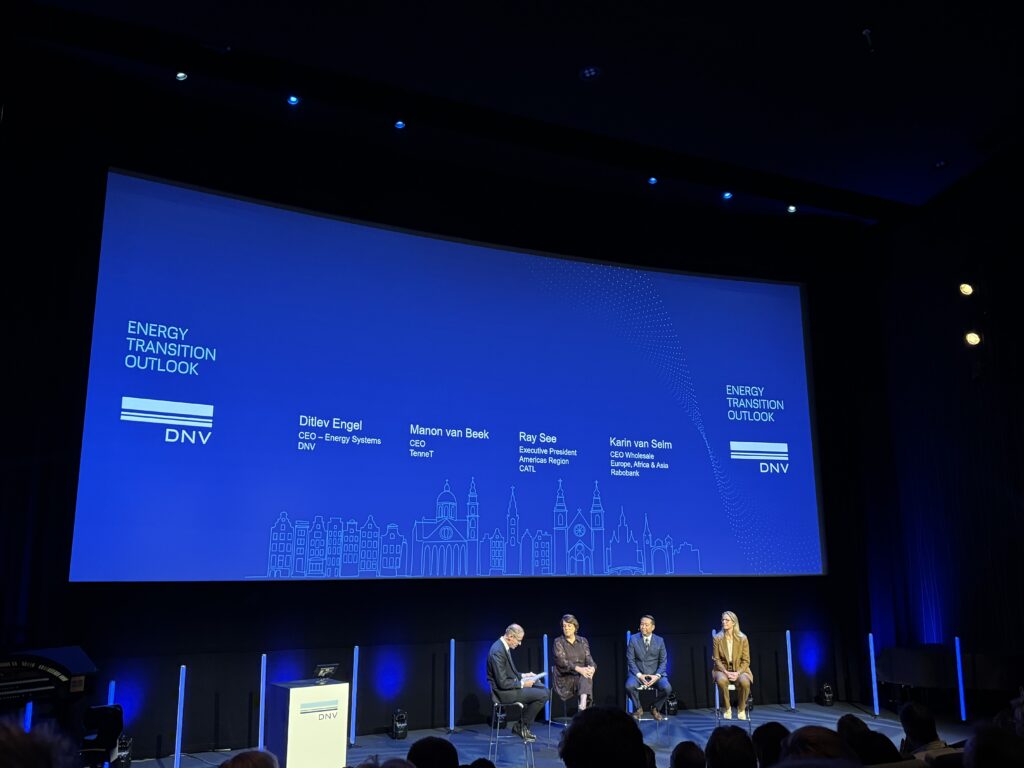
The most significant immediate risk is grid capacity, which has become a major bottleneck. The CEO of transmission system operator TenneT, Manon van Beek, stated that the challenge is not technology, but speed and deployment.
To address the gridlock, three core areas need acceleration:
- Permitting: Faster, more efficient approval processes (“first time right”) are critical to reduce project timelines, which can take up to 12 years.
- Supply Chain: Greater predictability is needed to secure long-term contracts and investment.
- Talent: An urgent need for skilled labor, with the Dutch energy sector alone currently facing 30,000 vacancies.
From a finance perspective, Rabobank’s CEO of Wholesale across Europe, Africa, & Asia, Karin van Selm, noted that while capital is available, predictability of policy is paramount. The required shift from an “economic model” to a more expensive “security/redundancy model” necessitates stable government policy until 2050 to give investors confidence.
The importance of storage as a key enabler was highlighted by Ray See, Executive President, Americas Region, CATL, with China’s success attributed to strategic infrastructure buildout, including 42 ultra-high voltage transmission lines, coupled with supportive financing to scale capacity.
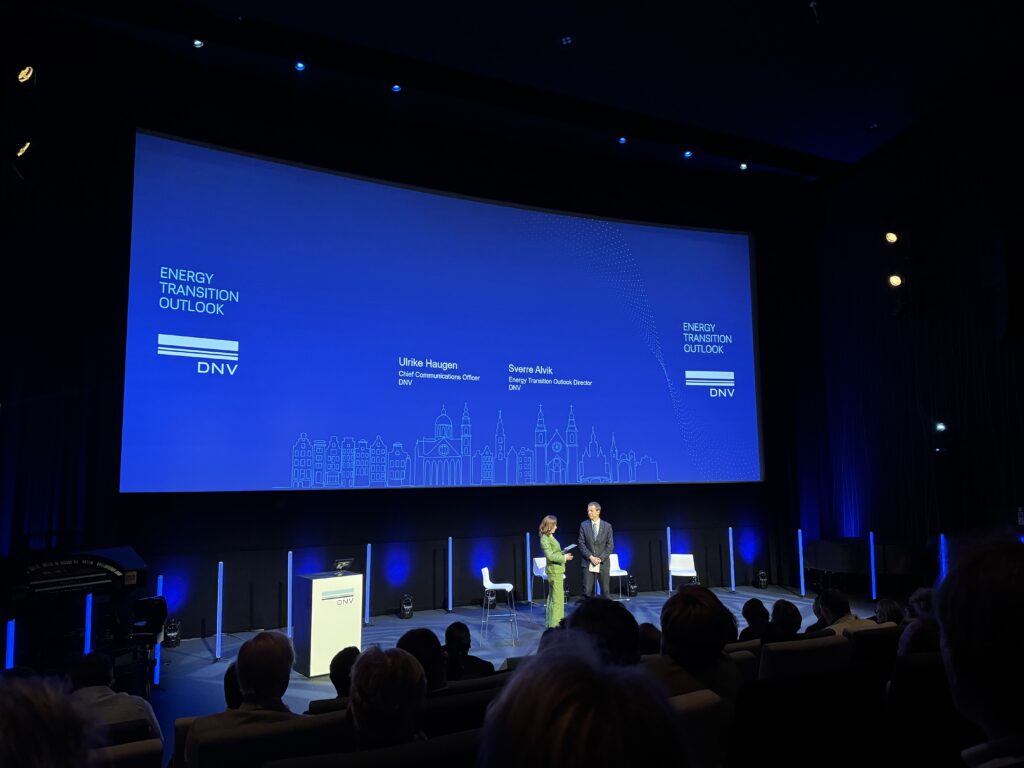
The Urgent Need for Continuity
Sverre Alvik, DNV’s Energy Transition Outlook Director, summarized the core takeaway: the energy system is changing fast, “but not fast enough.” The key to accelerating progress is continuity of policy, a stable, bold, and long-term 2050 vision. The world must acknowledge that technology waves from China are currently more impactful than policy ripples from the US, and that the energy transition is both “half full” of technological promise and “half empty” of the required pace to meet global climate goals.